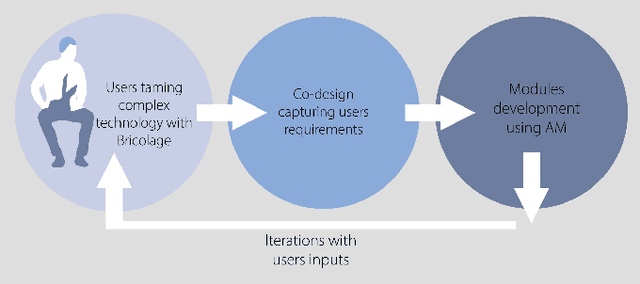Co-Design of Assistive Robotics with Additive Manufacturing and Cyber-Physical Modularity to Improve Trust
Paper and Code
Aug 02, 2021
Robotics and automation have the potential to significantly improve quality of life for people with assistive needs and their carers. Adoption of such technologies at this point in time is far from widespread. This paper presents a novel approach to the design of highly customisable robotic concepts, embracing modularity and a co-design process to increase the involvement of end-users in the development life cycle. We discuss this process within the context of an elderly care use case. Using design methodology and additive manufacturing, we outline how key stakeholders can be involved from initial conception through to integration of the final product within their environments. In future work, we will apply this process to demonstrate the effectiveness of our approach for improving long-term acceptance and trust of robotic technology in care contexts.
 Add to Chrome
Add to Chrome Add to Firefox
Add to Firefox Add to Edge
Add to Edge